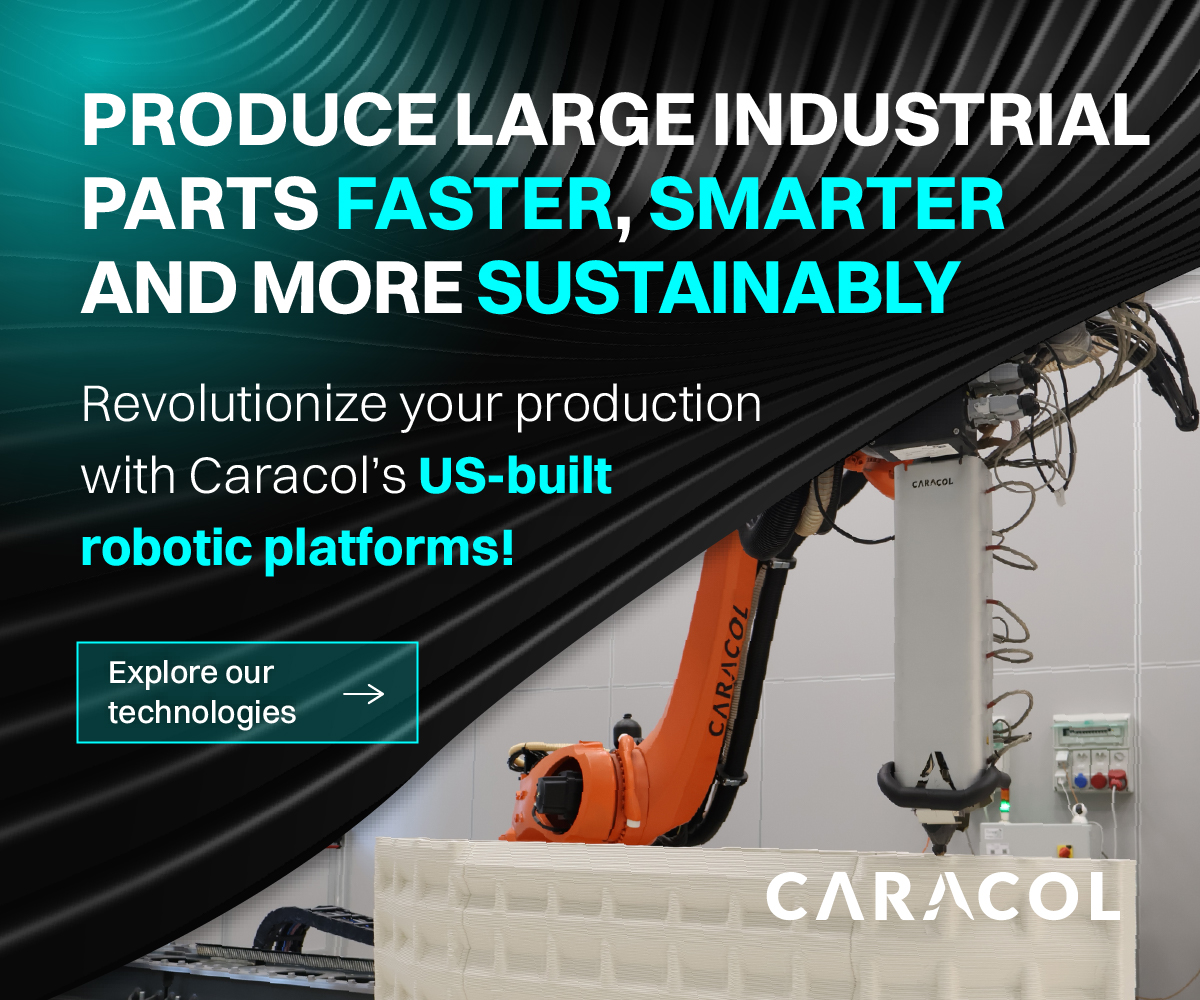In today’s 3D Printing News Briefs, we’ll start with sustainability research on AM feedstock from AMGTA, and then on to an aluminum alloy with enhanced mechanical properties. University students built an award-winning, low-cost, cold spray metal 3D printer prototype, and some proposed ASTM International standards focus on cementitious materials for additive construction. Finally, RepRap pioneer Richard Horne created a full-scale 3D printed replica of a classic arcade game.
AMGTA Releases Research Results on Metal AM Feedstock Sustainability
Launched in 2019, global advocacy group The Additive Manufacturer Green Trade Association (AMGTA) promotes sustainable additive manufacturing industry practices. The group recently announced the preliminary results of a research study it commissioned. “Specific Energy of Metal AM Feedstock: A Comparison” was conducted by research consultancy Syntec Associates and Divergent Technologies, a complete modular digital factory for complex structures. They evaluated the metal AM feedstock processing approaches of gas atomization, wire drawing, and mechanical milling—specifically ball milling—to find the specific energy requirements of each for producing materials. The study found that, when it comes to gas atomization for metallic powder production of commonly used alloys, helium was the most sustainable method, but that mechanical milling for powder production in AM exhibits a major reduction in specific energy consumption compared with gas atomization.
“A primary goal of the AMGTA is to educate the consumer on the most sustainable methods of production within the additive supply chain,” explained Brian R. Neff, AMGTA’s Board Chair. “This important piece of research provides guidance on which methods of gas atomization require the least amount of specific energy per kilogram. At the same time, it indicates to the market that mechanical production methods of powder feedstock, such as ball milling, are themselves an order of magnitude better than gas atomization from an energy perspective.”
For further findings on this and other AMGTA research studies, visit the AMGTA website here.
AM 4 AM Announces Enhanced Properties for Aluminum Alloy
Luxembourg company AM 4 AM specializes in producing advanced metal AM powders, and announced an exciting milestone: it’s improved the mechanical properties of HiperAL, its aluminum alloy for additive manufacturing. HiperAL is a zirconium derivative of a 7000 series aluminum powder the company makes using its patented cold plasma treatment. Surpassing conventional aluminum alloys, HiperAL is reported to feature 525 MPa in yield strength and 550 MPa in UTS, which makes it well-suited for demanding AM applications. AM 4 AM also says that its HiperAL ensures a maximum weight reduction, which results in a decrease of materials consumption, costs, and processing time.
“We are thrilled to unveil the enhanced mechanical properties of our HiperAL aluminum alloy. This achievement underscores our unwavering dedication to innovation and continuous improvement. It is not one small step ahead in the quest of the aluminum with the highest mechanical properties, it represents for our customers a giant leap for economically viable applications of aluminum in AM,” said AM 4 AM CEO Maxime Delmée. “With HiperAL, we are empowering our customers to elevate the performance of their aluminum parts and reduce costs like never before.”
University Students Build Cold Spray Metal 3D Printer Prototype

Julianna Dickman (from left), Galio Guo, Davis Thames, Douglas Hebda, Grant Samara, Aasha Zinke, Garrett French and Eli Case (Photo by Gustavo Raskosk, Rice University)
The Rice University student members of Team AeroForge built a cold spray metal 3D printer that, instead of temperature, uses pressure and velocity to fabricate parts. They demonstrated the viability of their low-cost prototype by successfully depositing copper, and won the university’s Hershel M. Rich Invention Award, plus an Excellence in Capstone Engineering Award and first place in the Willy Revolution Award for Outstanding Innovation at the annual Huff OEDK Engineering Design Showcase. The printer is made of a gas tank that feeds high-pressure nitrogen gas into the system, along with controls to regulate valves and monitor temperature and pressure, a custom nozzle, a feeder to dispense metal powder into the nozzle, and a pressure vessel that heats the gas to 450°C. According to team member Julianna Dickman, it’s still considered cold spray because when the gas meets the powder, it’s expanded out of the nozzle and cools down quickly. Additionally, they focused on reducing costs, and built the device for less than $5,000. Applications include manufacturing and repairing metal parts with complex structures, like those used in aircraft, vehicles, and on industrial assembly lines.
“Typically with repairs, you can only remove material as you reshape a metal part. But with this process, you can add material, and then machine it back down,” explained team member Davis Thames. “With welding, for instance, varying melting temperatures may result in uneven material properties. We don’t have that issue with this device.”
Proposed ASTM Standards for AC with Cementitious Materials
The ASTM International F42 Committee on Additive Manufacturing Technologies is working on a suite of proposed standards to support additive construction (AC). These standards, if accepted, will be used for quality assurance (QA) and quality control (QC) of cementitious materials and components used for AC. This effort relates directly to United Nations Sustainable Development Goals #8 (decent work and economic growth) and #9 (industry, innovation and infrastructure). According to ASTM member Eric Kreiger, U.S. Army Research and Development Center, there will be several groups of possible users for the proposed standards, including code regulators, contractors who develop and evaluate materials and construction quality in the field or factories, structural engineers and laboratory researchers, and more. He also explained that the standards will assist in improving “structural performance and materials usage through geometrical freedom,” as well as help reduce logistics and production of structures in remote and dangerous places.
The suite of proposed AC standards for cementitious materials includes:
- Practice for Additive Manufacturing: Fresh and Very Early Age Properties of Concretes Used for Additively Constructed Concrete by Means of Extrusion (WK89706)
- Practice for Additive Manufacturing: Construction and Documentation of Additively Constructed Concrete and Mortar Components (WK89707)
- Practice for Additive Manufacturing: Curing and Extraction of Sample from Additively Constructed Concrete and Mortar Components (WK90347)
- Test Method for Additive Manufacturing: Determination of Hardened Mechanical Properties of Additively Constructed Concrete and Mortar (WK90348)
Richard Horne’s Full-Scale 3D Printed Arcade Game Replica
Richard Horne, perhaps better known by RichRap, is a 3D printing legend, author, and the Commercial Director of UK-based Heber, and enjoys completing fun maker projects. In one of his latest, Horne created a full-scale 3D printed replica of the classic Computer Space, which was the first arcade game from the co-founders of Atari. It was based on the 1962 computer game “Spacewar!” and launched in 1971, just a year ahead of the much simpler and more successful Pong. Computer Space was written for use on a Digital PDP-1 minicomputer and failed to meet commercial expectations, but it was certainly a thing of beauty—the game’s original cabinet was molded from wood and fiberglass, made by a hot tub manufacturer, and featured plenty of glitter. Only 1,500 units were created, and only a few of these originals are still around, so Horne took matters into his own hands.
He “sculpted a replica cabinet shape based on images of the original machines,” and instead of fiberglass, Horne and the 3D print farm at Heber used large-scale 3D printing to create just under 100 sections for the replica. The parts were then bonded together using 3D Gloop, and the machine was filled, sanded, painted, and received a blue glitter-resin coat, just like the original. The replica was built for the Arcade Archive museum at Heber’s Belvedere Mill in Gloucestershire, where it can now be seen, and even played. Plus, Horne released the files for the Computer Space replica on Printables under a Creative Commons Attribution 4.0 International License, so you can make your own!
Subscribe to Our Email Newsletter
Stay up-to-date on all the latest news from the 3D printing industry and receive information and offers from third party vendors.
Print Services
Upload your 3D Models and get them printed quickly and efficiently.
You May Also Like
Velo3D Gets a Boost, and So Does Its Stock, Amid iRocket Partnership Expansion
In an era when national security increasingly depends on technological strength, Velo3D (Nasdaq: VELO) and Innovative Rocket Technologies (iRocket) have once again joined forces to strengthen U.S. aerospace and defense...
3D Printing News Briefs, October 15, 2025: Thermal Simulation, Ceramic Fuel Cells, & More
In today’s 3D Printing News Briefs, Dyndrite and Ansys are collaborating on reducing risk in metal AM, and researchers from the Technical University of Denmark are 3D printing ceramic, coral-inspired...
The Photonic Chip 3D Printing Opportunity
Photonic chips may revolutionize a lot of processes and electronic devices, including 3D printing. Photonic chips, the development of the photonic integrated circuit, silicon photonics, light valves, integrated quantum photonics,...
3D Printing News Briefs, October 11, 2025: Metal Powder, Texturizing, Sleep Apnea, & More
We’re starting with material news in this weekend’s 3D Printing News Briefs, as Continuum Powders has announced availability of its Cobalt-Chrome F75 powder. Moving on, Dyndrite LPBF Pro now supports...








































